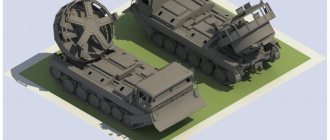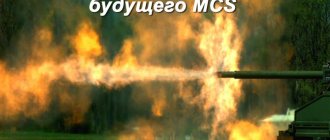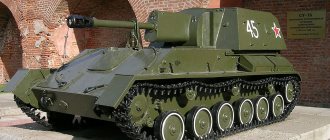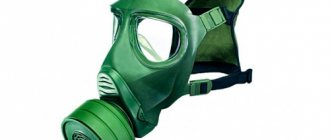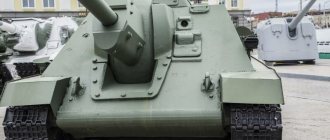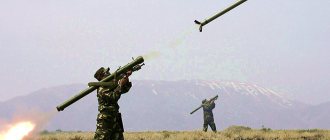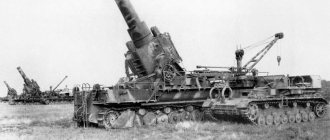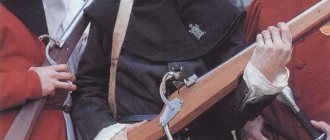SAU 2S31 Vienna 120 mm. Firing range. Story. Dimensions. Weight
One of the new developments of Motovilikha Plants OJSC is the 2S31 Vena self-propelled gun, created on the basis of the BMP-3 infantry fighting vehicle. On the battlefield, the self-propelled gun must first of all support motorized rifle battalions moving on the BMP-3 with fire. The layout of the machine is quite traditional. In the bow of the hull along its longitudinal axis there is a control compartment where the driver’s workplace is located. The middle part of the hull and the armored turret are occupied by the fighting compartment. The installation commander, gunner and loader are located here.
Combat use
In 1981, the first battery, consisting of six self-propelled guns, was sent to Afghanistan. In total, about 70 Nona self-propelled guns took part in the Afghan campaign. Their task was to support airborne units on the battlefield. The SAO 2S9 replaced mortar batteries and divisions of SD-44 self-propelled guns in airborne units. As a rule, the shooting was carried out with ordinary smooth-bore mortar mines. The war in Afghanistan showed both the advantages of Nona and its shortcomings.
The main advantage of the gun was its versatility and significant elevation angle of the gun, allowing it to successfully hit targets in mountainous terrain. Also, “Nona” was seriously superior to conventional mortars in its mobility, especially on rough terrain.
Among the main disadvantages are the rapid wear of the vehicle's chassis and the small ammunition load of the gun.
In general, the use of the Nona self-propelled gun in Afghanistan was considered successful, which led to the development of the 2B16 Nona-K towed gun in 1986.
The next serious test for the self-propelled gun was the first Chechen campaign. "Nonas" were actively used by federal troops. During the fierce battles for the center of Grozny, the fighters of the Ryazan airborne battalion were able to hold their positions only thanks to the support of the SAO 2S9 division.
Another example of the effective use of 2S9 in that conflict were the events of the winter of 1996. A column of Russian paratroopers was ambushed in the Shatoi region, and the fighters were able to repel the attacks of the separatists only thanks to the fire support of self-propelled guns.
The “Nones” also took part in the second Chechen campaign. By the beginning of the anti-terrorist operation in Dagestan, the airborne forces group deployed in this area had from twelve to eighteen 2S9 artillery guns.
During the famous battle at Height 776, the support of self-propelled guns made it possible to inflict quite significant damage on the enemy. A total of 1,200 shells were fired at the enemy; thanks to the excellent training of the artillerymen and the competent actions of reconnaissance and fire spotters, most of the separatists died from artillery fire.
Currently, the Nona self-propelled gun is used in the conflict in eastern Ukraine. This self-propelled weapon is used by both warring sides.
SAU 2S31 Vienna - video
In the stern there is a motor-transmission section. The body and turret of the self-propelled gun are welded from sheets of armor that protect the crew from small arms bullets and fragments of artillery shells and mines. The self-propelled gun is equipped with a V-shaped ten-cylinder liquid-cooled diesel engine UTD-29, the power of which reaches 500 hp. With. The hydromechanical transmission has power take-off for water jet propulsion.
"Vena" is installed on a modified BMP-3 chassis. The individual hydropneumatic suspension is distinguished by a large dynamic travel of the road wheels, paired with external shock absorption in the form of rubber bands. There are six support and three support rollers on each side. Additional hydraulic shock absorbers are attached to the suspension units of the first two and last road wheels. The drive wheels are rear-mounted. The electromechanical, remote-controlled track tensioning mechanism is controlled from the driver’s seat. The caterpillar is steel, fine-linked, with a rubber-metal hinge. Thanks to this chassis design, the car moves smoothly both on the highway and over rough terrain. It easily overcomes vertical walls reaching a height of 0.8 m and ditches 2.5 m wide. At the same time, the fighting compartment of the Vienna is designed in such a way that it can be placed on other types of chassis - tracked or wheeled. Sometimes the amphibious armored personnel carrier BTR-80 can be used as a wheeled chassis.
2S31 “Vena” is a floating vehicle and reaches speeds of up to 10 km/h, which is achieved through two single-stage axial auger-type water-jet propulsors. The main armament on the self-propelled gun is a 120-mm rifled gun, which is a modernized version of the 2A51 self-propelled gun 2S9. It includes a rifled barrel with a combined semi-automatic bolt, a cradle with a fence, recoil devices and a sector lifting mechanism. The gun differs from the base model primarily in its elongated barrel, which has a beneficial effect on the firing range when using the same ammunition. In addition, it is equipped with a pneumatic rammer and a system for forced purging of the barrel bore after the shot. The gun is aimed in a vertical plane at an angle of -4 to +80 degrees, and the aiming is automatically restored after each shot by means of a servo drive. Rotation of the turret ensures that the gun is aimed in a horizontal plane.
The gun's transportable ammunition includes 70 rounds, which are located in mechanized ammunition racks in the fighting compartment. In addition, on the right side of the vehicle there is a hatch with an armored cover through which shots can be fired from the ground. The 2S31 ammunition does not differ from the shells of all 120 mm guns.
The ammunition load includes high-explosive fragmentation shells OF-49 and OF-51 with ready-made rifling on the leading belt, which act in the same way as high-explosive fragmentation shells of 152 and 155 mm caliber; the OF50 active-missile projectile and a cumulative projectile that penetrates armor plates over 650 mm thick at a distance of up to 1000 m. When firing from this gun, all 120-mm caliber mortar ammunition of Soviet and foreign production can be used. In addition, the Vena's ammunition load has been replenished with a new Kitolov-2M guided projectile, which is aimed at the target using a laser designator. The vehicle's auxiliary armament is a 7.62-mm PKT machine gun mounted on the roof of the commander's cupola and intended for firing at ground and air targets. The rate of fire is 500-600 rounds per minute. In addition, two blocks of twelve 81-mm grenade launchers are installed on the frontal armor, used to set up smoke screens. Smoke grenades are released automatically upon command from a laser radiation detector.
The 2S31 Vena self-propelled gun is equipped with a modern fire control system, which includes a periscope sight and a separate sight for direct fire, an autonomous target designation system using its own surveillance and reconnaissance equipment, a navigation and topographic reference system. In addition, the self-propelled guns are equipped with modern radio communications, a fire extinguishing and anti-nuclear protection system, navigation and topographical equipment, as well as infrared night vision devices.
Machine evaluation
The SAO 2S31 fully complies with the requirements of modern conditions of combined arms combat. 2S31 artillery battalions can perform fire missions as part of motorized rifle or tank formations. The use of this form of organizational structure allows the level of autonomy of the 2S31 on the battlefield, comparable to tanks or infantry fighting vehicles. 2S31 divisions can be assigned to tank or motorized rifle battalions that include BMP-3 infantry fighting vehicles, and also provide battery-by-battery artillery support to companies in the direction of the main attack. According to experts, the combat potential of a tank/motorized rifle regiment will double when replacing the towed mortar division with the 2S31 division.
When comparing the 2S31 with foreign analogues, the main competition is the AMOS self-propelled mortar, the main advantage of which is its rate of fire. However, this advantage is offset by the higher characteristics of the combat power of the Vena SAO ammunition, as well as higher accuracy and accuracy of fire. In addition, thanks to the ability to provide direct fire support to motorized rifle and tank units when hitting small and area targets, the SAO 2S31 is completely superior to the AMOS. Thanks to the combination of basic characteristics and automation, the declared survivability of the SAO 2S31 on the battlefield is 3-5 times higher, and the overall efficiency is 2.7-4.5 times higher than that of similar foreign-made systems.
Gun 2A36 "Gyacinth-B" - video
https://youtube.com/watch?v=sJi0tkq2sok
Unlike previous Soviet-designed artillery systems, the 2A36 is a completely new design. The 49-caliber barrel is equipped with a multi-slit muzzle brake; double-frame carriage with pallet; the wheel travel is biaxial. In the combat position, the wheels are suspended using a hydraulic jack. Unusual for Soviet artillery systems is the hydraulically driven loader, which operates in combination with an automatic bolt with horizontal stroke. Such a system allows the 2A36 cannon to fire up to six rounds per minute; Thus, one battery of eight 2A36 guns is capable of raining down almost a ton of shells on a target in one minute. Like most Soviet guns, the 2A36 is equipped with a shield to protect the gun's various systems; in addition, there is a small shield above the recoil shock absorber.
The long barrel of the 2A36 cannon imparts a high initial velocity to the projectile, equal to approximately 800 m/s, which allows for a correspondingly long shot range of 27,000 meters when using standard ammunition. There is a report that when using an active-missile projectile, a firing range of 40,000 meters has been achieved. The 2A36 cannon fires cannon-loading ammunition with extended projectiles - this type of ammunition is used only by the 2S5 self-propelled gun; At one time, these included tactical nuclear shells. Other types include high-explosive fragmentation projectile (the most common, weighing 46 kg), concrete-piercing, incendiary and chemical (currently withdrawn from service). When firing directly at armored targets, an armor-piercing projectile is used.
Performance characteristics of self-propelled guns 2S31 Vienna
— Developer: ZAO SKB — Years of development: from the 1980s to 2007 — Years of production: since 1995
Crew of self-propelled gun 2S31 Vienna
- 4 people
Weight of SAU 2S31 Vienna
— 19.08 tons
Overall dimensions of self-propelled guns 2S31 Vienna
— Body length, mm: 6856 — Length with gun forward, mm: 7511 — Width, mm: 3366 — Height, mm: 3439 — Base, mm: 4060 — Track, mm: 3140 — Ground clearance, mm: 450
Reservation of self-propelled guns 2S31 Vienna
— Armor type: bulletproof
Active protection of self-propelled guns 2S31 Vienna
— TSHU-2 “Shtora-1”
Armament of SAU 2S31 Vienna
— Caliber and brand of gun: 120-mm 2A80 — Gun type: rifled semi-automatic gun-howitzer-mortar — Gun ammunition: 70 — VN angles, degrees: −4…+80° — GN angles, degrees: 360° — Sights : 1P50, 1P51, 1D22S, PZU-5M
— Machine guns: 1 × 7.62 mm PKTM
Firing range of self-propelled gun 2S31 Vienna
— 0.5…14 km
Engine SAU 2S31 Vienna
— Engine type: UTD-29 — Engine power, l. pp.: 450
Speed self-propelled gun 2S31 Vienna
— Highway speed, km/h: 70 — Cross-country speed, km/h: 10 afloat
— Cruising range on the highway, km: 600 — Cruising range over rough terrain, km: 90 afloat
— Specific power, l. s./t: 26 — Suspension type: individual torsion bar — Specific ground pressure, kg/cm²: 0.61
— Rise to be overcome, degrees: 35 — Wall to be overcome, m: 0.8 — Ditch to be overcome, m: 2.5 — Ford to be overcome, m: floating
Self-propelled gun SU-14-Br-2
The first self-propelled artillery installations were the first in the world to be designed in the USSR, however, due to the difficult internal political situation in the country, work on further improving these combat vehicles and launching them into mass production was suspended for a long time. Only in 1939, during the Soviet-Finnish war, the need for such installations became obvious. The Red Army units sent to storm the Mannerheim Line needed powerful fire cover. It was decided to strengthen the armor of two existing experimental installations, SU-14 and SU-14-1, by shielding them with armor plates 30-50 mm thick and send these combat vehicles to the combat area. Shielding was necessary so that the installations were able to approach enemy bunkers within direct shot range. However, the production of armor plates, ordered by the Izhora plant, dragged on until March 1940. By this time, the fighting in the Karelian Isthmus area had ended.
The SU-14 self-propelled gun was equipped with a 152 mm B-30 cannon, and the SU-14-1 self-propelled gun was equipped with a Br-2 cannon. During testing, the units with reinforced armor covered about 26 km. It turned out that their driving characteristics leave much to be desired. Turns were difficult, the engine worked with tension. The transmission was not improved to the required extent due to insufficient funding for the work; only the rubber tires of the rollers were replaced with metal ones. Both self-propelled guns took part in the defense of Moscow in the area of Kubinka station in 1941.
Photo 2С31 Vienna
Similar
SAU 2S7 Pion (2S7M Malka) performance characteristics. Caliber. Dimensions. Firing range
MLRS BM-21 Grad. Damage area. Rockets. Caliber. Story
120-mm mortar 2B11 complex 2S12 Sani TTX. Firing range. Weight
Mortar 2B9M Vasilek 82 mm Rate of fire. Firing range. Weight
Self-propelled gun 2S3 Akatsiya 152 mm. Firing range. Dimensions. Weight. Engine
SAU 2S1 Gvozdika 122 mm Firing range. Dimensions. Device. Weight
Gun 2A36 Giatsint-B 152 mm. Firing range. Dimensions. Device
MLRS 9K58 Smerch Damage area. Rockets. Caliber. Story
MT-12 Rapier gun. Firing range. Story. Dimensions
Howitzer D-30 122-mm performance characteristics. Firing range. Dimensions. Weight
2S4 Tulip self-propelled mortar 240 mm performance characteristics. Dimensions. Firing range. Weight
Self-propelled gun 2S35 Koalitsiya-SV 152-mm performance characteristics. Firing range. Dimensions. Weight
Howitzer Msta-B (2A65) 152 mm. Firing range. Dimensions. Weight. Ammunition
Self-propelled gun 2S9 Nona-S 120 mm performance characteristics. Firing range. Dimensions. Weight. Armament
AT-T heavy artillery tractor. TTX. Dimensions. Engine. Story
SAU 2S19 Msta-S 152 mm Dimensions. Speed. Engine. Story
MLRS 9K57 Hurricane Damage area. Rockets. Caliber. Story
TOS-1 Buratino (TOS-1A Solntsepek) performance characteristics. Damage area
Divisional gun ZIS-3 76 mm. TTX. Firing range. Dimensions. Weight
Howitzer gun D-20 152 mm performance characteristics. Firing range. Dimensions. Weight
Howitzer M-30 model 1938 122-mm performance characteristics. Firing range. Dimensions. Weight
Self-propelled gun 2S5 Giatsint-S 152 mm performance characteristics. Firing range. Armament. Dimensions. Weight
Self-propelled gun Ferdinand (Elephant) performance characteristics. Reservation. Weight. Dimensions
Self-propelled gun SU-100. TTX. Armament. Dimensions. Shells. Weight. Speed
Self-propelled gun Sturmtiger caliber 380 mm. TTX. Armament. Shells. Reservation. Dimensions
203-mm howitzer B-4 model 1931 performance characteristics. Weight. Ammunition. Dimensions
Self-propelled gun SU-152 St. John's wort 152 mm performance characteristics. Shells. Firing range. Dimensions. Weight
Gun M-46 130-mm performance characteristics. Firing range. Dimensions. Weight
Demining installation UR-77 Meteorite TTX. Armament. Dimensions
MLRS 9K51M Tornado-G. Rockets. TTX. Firing range. Dimensions
SAU 2S31 Vienna 120 mm. Firing range. Story. Dimensions. Weight
German self-propelled gun StuG III. Modifications. Dimensions. Armament. Weight
Guided projectile Krasnopol. TTX. Firing range. Dimensions. Price
Mortar Karl 600 mm and 540 mm performance characteristics. Firing range. Weight. Dimensions
Big Bertha 420 mm gun. TTX. Weight. Dimensions. Ammunition
Self-propelled gun SU-76. TTX. Dimensions. Reservation. Weight. Story
SAU 2S23 Nona-SVK 120-mm performance characteristics. Armament. Range and accuracy of fire. Dimensions
SAU 2A3 Condenser-2P caliber 406 mm Firing range. Armament. Dimensions. Weight
Mortar M-160 caliber 160-mm performance characteristics. Firing range. Ammunition. Dimensions
Airborne self-propelled gun ASU-57. Armament. TTX. Dimensions. Weight. Booking
Artillery complex A-222 Bereg 130 mm. TTX. Firing range. Ammunition
Howitzer BR-18 caliber 305 mm TTX. Firing range. Weight
152 mm howitzer D-1. Firing range. Dimensions. Weight. Device
Mortar M-240 caliber 240 mm. Firing range. Dimensions. Weight
Self-propelled gun SU-85. Ammunition. Reservation. Dimensions. Weight. Engine
Counter-battery radar Zoo-1 (1L219M). Range of control of firing positions. Device
SAU 2S25 Sprut-SD. Caliber. Story. Dimensions. Weight. Engine
Self-propelled gun 2S34 Hosta 120 mm. TTX. Dimensions. Firing range. Armament. Weight
Self-propelled gun ASU-85. Armament. Dimensions. Reservation. Weight
280-mm mortar Br-5 model 1939 Dimensions. Weight. Ammunition
Self-propelled gun 2A45M Sprut-B. TTX. Speed. Engine. Weight
Belarusian MLRS BelGrad. TTX. Firing range. Ammunition. Dimensions
S-23 cannon 180 mm caliber. Ammunition. Weight. Dimensions. Firing range
Self-propelled gun SAU SU-122. Dimensions. Armament. Reservation. Weight
Self-propelled gun Jagdpanther. Weight. Reservation. Dimensions. Armament
Multi-barreled self-propelled gun M50 Ontos. TTX. Armament. Dimensions. Booking
D-74 cannon 122 mm caliber. Firing range. Dimensions. Weight
Artillery tractor T-20 Komsomolets. Armament. Reservation. Dimensions. Weight
Artillery tractor YA-12. Dimensions. Weight. Load capacity. Engine
SAU ISU-122. Armament. Dimensions. Weight. Booking
RPU-14 (8U38) - rocket launcher
2K32 Deva - 82-mm self-propelled mortar system
MLRS BM-24 (T) 240 mm. Firing range. Dimensions. Weight. Engine
Artillery tractor Comintern. Load capacity. Dimensions. Weight. Engine
Self-propelled gun SU-122-54. Reservation. Dimensions. Weight. Firing range
MLRS BM-14-16. Armament. Dimensions. Weight. Firing range
Self-propelled gun Nashorn (Rhinoceros). Armament. Dimensions. Weight. Booking
BR-2 gun caliber 152 mm. Firing range. Dimensions. Weight
Self-propelled howitzer self-propelled gun PzH 2000. Firing range. Dimensions. Weight
BR-17 cannon 210 mm caliber. Weight. Firing range. Rate of fire
Self-propelled gun Vespe 105 mm. Armament. Dimensions. Reservation. Weight
Wheeled self-propelled gun GAZ-68 (KSP-76). Armament. Dimensions. Weight. Engine
Self-propelled gun Brummbar 150 mm. Armament. Dimensions. Weight. Booking
Heavy self-propelled gun SU-14. Reservation. Dimensions. Weight. Engine
Self-propelled gun SU-5. Armament. Reservation. Dimensions. Weight
Self-propelled gun AT-1. Reservation. Dimensions. Weight. Engine
Self-propelled gun SU-12. Armament. Reservation. Dimensions. Weight
History[edit]
After the successful use of the 2S9 “Nona-S” self-propelled artillery gun in the Airborne Forces during combat operations in Afghanistan, the leadership of the Ministry of Defense decided on the need to have such a weapon in the ground forces. A series of experimental design work was opened on the installation of the 2A51 gun on the chassis of the ground forces. As a base for a self-propelled artillery gun of the ground forces, several options were considered, both tracked (2S17 “Nona-SV” based on the 2S1 chassis and 2S17-2 “Nona-SV” based on the BRM-1K) and wheeled (2S23 "Nona-SVK" based on the BTR-80). The development of the tracked version of the Nona-SV based on the 2S1 was carried out at the Special Design Bureau of the Kurgan Machine-Building Plant.
In the 1980s, work began, the main task of which was to create a 120-mm automated self-propelled artillery gun. In this regard, work on Nona-SV was closed. The new gun received the index 2S31 and was developed at JSC Motovilikha Precision Engineering. New ammunition with increased combat power was developed at the State Research and Production Enterprise "Basalt". The chassis for the 2S31 was borrowed from the experimental regimental self-propelled howitzer 2S18 "Pat-S". In 1995, the first two prototypes were manufactured, and in 1996, “Vienna” was first demonstrated at the IDEX-97 exhibition. In 2007, the vehicle passed state tests, and in 2010, the first pilot batch entered service with the Russian Army.
